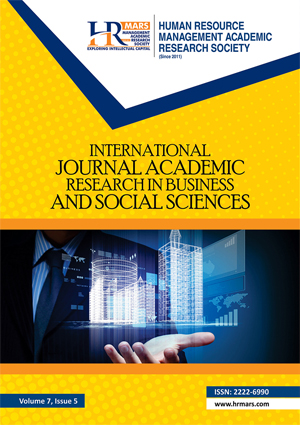Aaker, D. A., Kumar, V., Day, G. S., & Lawley, M. (2005). Marketing research. The pacific rim edition. Queensland: John Wiley & Sons Australia, Ltd.
Alexandris, K., Dimitriadis, N, & Markata, D. (2002). Can perception of service quality predict behavioural intentions? An exploratory study in the hotel sector in Greece. Managing Service Quality, 12(4), 224-233.
Anderson, E. W., & Mittal, V. (2000). Strengthening the satisfaction-profit chain. Journal of Services Research, 3(2), 107-20.
Armstrong, R.W. & Tan, B.S. (2000). Corporate-customer satisfaction in the banking industry of Singapore. The International Journal of Bank Marketing. 18(3), 97-104.
Andaleeb, S. S., & Conway, C. (2006). Customer satisfaction in the restaurant industry: An examination of the transaction-specific model, Journal of Services Marketing, 20(1), 3-11.
Biswas, R., & Cassel, C. (1996). Strategic HRM and the gendered division of labour in the hotel industry: A case study. Personnel Review, 25(2), 19-28.
Bowling, A. (2015). Mode of Questionnaire Administration Can Have Serious Effects on Data Quality, Journal of Public Health, 27 (3), 281-291.
Brick, J. M., & Douglas, W. (2013). Explaining Rising Non-Response Rates in Cross-Sectional Surveys. The Annals of the American Academy of Political and Social Science, 645 (1), 36–59.
Crook, T. R., Ketchen, D. J., & Snow, C. C. (2003). Competitive edge: A strategic management model. The Cornell Hotel and Restaurant Administration Quarterly, 44(3), 44.
Finkelstein, J. (1988). Dining Out: A Sociology of Modern Manners. Polity Press: Cambridge.
Fisher, L. (2015). How CRM is becoming the ‘new advertising’. Retrieved from https://www.marketingweek.com/2015/11/09/how-crm-is-becoming-the-new-advertising?/
Fryet, D. K. (2015). Global Trends Affecting the Food Service Industry Today and Tomorrow. Retrieved from http://fryettcg.com/deepfryett/2014/11/global-trends-affecting-the-food-service-industry-today-tomorrow/
Grimmelikhuijsen, S., & Porumbescu, G. A. (2017). Reconsidering the expectancy disconfirmation model. Three experimental replications. Public Management Review, 19 (9), 1272-1292, https://doi.org/10.1080/14719037.2017.1282000
Hair, J. F., Bush, R. P., & Ortinau, D. J. (2006). Marketing research: Within changing information environment (3rd ed). New York, NY: McGraw-Hill Irwin.
Halstead, D., & Page, T. J. Jr. (1992). The effects of satisfaction and complaining behavior on consumer repurchase intentions. Journal of Consumer Satisfaction, Dissatisfaction and Complaining Behavior, 5, 1-11.
Hu, S. H. (2005). A structural equation model of the senior citizens’ purchasing process in foodservice: Considering the quality of food, nutrition, service and entertainment in foodservice environment. (Unpublished Doctoral Dissertation). The Oklahoma State University.
Hunt, N. K., Hunt, N. D., & Hunt, T. C. (1988). Consumer grudgeholding. Journal of Consumer Satisfaction, Dissatisfaction and Complaining Behavior, 1, 116-118.
Santouridis, I., & Veraki, A. (2017). Customer relationship management and customer satisfaction: the mediating role of relationship quality. Total Quality Management & Business Excellence, 28 (9-10), 1122-1133, https://doi.org/10.1080/14783363.2017.1303889
Jackson-Smith, D., Flint, C. G., Dolan, M.; Trentelman, C. K., Holyoake, G., & Thomas, B. (2016). Effectiveness of the Drop-off/Pick-up Survey Methodology in Different Neighbourhood Types, Journal of Rural Social Sciences, 31(3), 35–67.
Kandampully, J. (2002). Services management: the new paradigm in hospitality. New South Wales: Hospitality Press/Pearson Education Australia.
Keillor, B., Owens, D., & Pettijohn, C. (2001). A cross-cultural/cross-national study of influencing factors and socially desirable response biases. International Journal of Market Research, 43(1), 63-84.
Kline, R. B. (2016). Principles and Practices of Structural Equation Modeling (4th ed), London: Guilford Press.
Kivela, J., Inbakaran, R., & Reece, J. (1999a). Consumer research in the restaurant environment. Part 1: A conceptual model of dining satisfaction and return patronage. International Journal of Contemporary Hospitality Management, 11(5), 205-222.
Lewis, R. C., & Pizam, A. (1981). Guest surveys: A missed opportunity. The Cornell Hotel and Restaurant Administration Quarterly, November, 37-44.
Loureior, S. M. C., & Gonzalez, F. J. M. (2008). “The Importance of Quality, Satisfaction, Trust, and Image in Relation to Rural Tourist Loyalty”. Journal of Travel & Tourism Marketing, 25(2), 117-36.
Malhotra, N., Hall, J., Shaw, M. & Oppenheim, P. (2002). Marketing research: An applied orientation, (2nd Ed.). New South Wales: Pearson Education Australia.
Oliver, R. L. (1997). Satisfaction: A Behavioral Perspective on the Consumer. New York: McGraw–Hill.
Parasuraman, A., Berry, L. L., & Zeithaml, V. (1993). More on improving service quality measurement. Journal of Retailing, 69(1), 140-147.
Pizam, A., & Ellis, T. (1999). Customer satisfaction and its measurement in hospitality enterprises. International Journal of Contemporary Hospitality Management, 11(7), 326-339.
Riley, P.J. & Kiger, G. (2002) Increasing survey response: The drop-off/pick-up technique, The Rural Sociologist, 22(1), 6-9.
Rosier, E. R. (2011). Marketing Strategy in Turbulent Environment. Journal of Strategic Marketing, 19(5), 413-419.
Rust, R. T., & Oliver, R. L. (1994). Service quality: New directions in theory and practice. Thousand Oaks, California: Sage Publications.
Scott-Delany, F. (2017). Restaurant growth is up, but turbulent times lie ahead, retrieved from https://www.bighospitality.co.uk/Article/2017/09/22/
Shriedeh, F., & Abd. Ghani, N. H. (2017). Impact of Customer Relationship Management on Brand Equity: Medical Tourist Perspective. Research Journal of Business Management, 11, 28-38.
Smith, A. K., Bolton, R. N., & Wagner, J. (1999). A model of customer satisfaction with service encounters involving failure and recovery. Journal of Marketing Research, 36(3), 356-72.
Tourism Malaysia. (2018). Malaysia Tourism Statistics in Brief. Retrieved from https://www.tourism.gov.my/statistics
Theordore, L. (1981). Marketing Intangible Products and Product Intangibles. Harvard Business Review, retrieved from https://hbr.org/1981/05/marketing-intangible-products-and-product-intangibles
Wood, R. C. (1995). The Sociology of the Meal. Edinburgh: Edinburgh University Press.
Yuksel, A., & Yuksel, F. (2008). Consumer Satisfaction Theories: A Critical Review, in Atila Yuksel (ed) Tourist satisfaction and complaining behaviour: Measurement and Management Issues in the Tourism and Hospitality Industry, New York: Nova Science.
Zeithaml, V. A., Berry, L. L., & Parasuraman, A. (1996). The behavioural consequences of service quality. Journal of Marketing, 60, 31-46.
